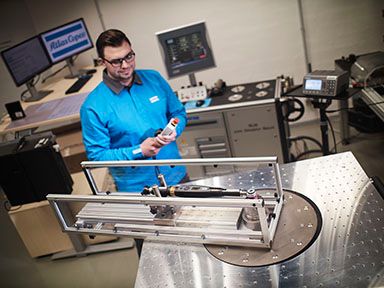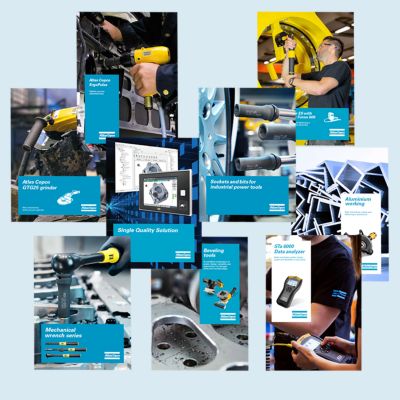To update or not to update, that is the question.
Whether 'tis nobler in the mind to suffer
The bugs and glitches of outdated software,
Or to take arms against a sea of troubles
And by updating end them.
This might have been Hamlet's speech if he were facing the challenge of updating the software running on the manufacturing floor of his company. Luckily for literature lovers, Shakespeare's focus was elsewhere. Yet, the dilemma remains for many of us working with software: should the software be updated or not?
In this short article, I’d like to explore the challenge of software updates, the famous rule to “never touch a running system,” and why that mindset can fall short in today’s world of evolving software solutions.
Why software doesn’t age well (and what theory says about it)
In the 1970s, Lehman and Belady formulated a series of laws regarding software evolution – laws that, surprisingly, still hold true today in our fast-paced digital era. Lehman's Laws teach us that unless software is continually adapted, it becomes progressively less satisfying to its users over time.
Software updates typically fall into three broad categories:
- Corrective: updates focused on fault fixing (e.g., bugs in interfaces)
- Perfective: updates related to system improvements (e.g., memory consumption)
- Adaptive: updates that allow the introduction of new features that add significant value to the user (e.g., additional functionalities). The activities included in this category are also known as upgrades.
A study shows that these three types of development activity can account for up to 70% of the total lifecycle cost of a software system. So, contrary to popular belief, software is rarely a “build once, sell forever” model. Software companies serving the manufacturing sector understand this well – and invest heavily in ongoing software maintenance.
Don’t skip the update – here’s why it’s worth it
If the software solution running in your manufacturing facility impacts uptime and quality – the two pillars of any successful production line – then software updates should be high on your priority list.
Here are five compelling reasons to keep your software up to date:
- Security improvements: patching security vulnerabilities is one of the primary reasons for updates. Staying updated reduces the risk of data breaches, system downtime, or data loss.
- Bug fixes: updates often resolve issues discovered in previous versions, leading to more stable and reliable performance.
- Performance enhancements: optimizations introduced via updates can improve speed and efficiency, helping your systems run better with fewer resources.
- New features: new functionalities can streamline workflows, enhance usability, and even offer a competitive advantage.
- Compliance and compatibility: in regulated industries, updated software may be necessary to meet standards. Falling behind could result in non-compliance, fines, or operational disruptions.

How to update your software without the headaches
Updating a software solution – especially one with multiple interfaces and databases – requires planning and the right level of expertise.
For standard or "off-the-shelf" solutions, suppliers often provide patches and update guidelines. But in cases where the software includes tailored features or custom interfaces, it’s best to let the supplier handle the update directly. Not only does this ensure a smoother process, but it often comes with a warranty should something go wrong.
Consider whether your software provider offers a Service Agreement that includes updates and support – this could be a worthwhile investment for peace of mind and long-term performance.
Before reaching out to your supplier, I recommend having a conversation with your internal IT team. They’ll have a strong sense of what’s possible, what’s necessary, and what risks should be considered.
A real-world example: when software stability is just an illusion
In early 2024, one of our customers was running several Atlas Copco software solutions on their production floor – all without performing any updates. Relying on the old saying “never touch a running system,” they had enjoyed years of seemingly stable operation and saw no reason to change what appeared to be working.
But in the software world, what looks stable on the surface can be misleading. True stability doesn’t mean “no visible problems” – stable software means a system that’s properly maintained, kept compatible with its environment, and ready to respond to changes. Without those elements in place, that apparent stability can quickly fall apart.
That’s exactly what happened when their internal IT department applied a mandatory operating system security patch, triggering unexpected behavior in the software's interface. Critical features like data logging and traceability were disrupted. When the customer reached out for support, our team discovered that their custom connectors had stopped working due to a newly enforced internal security policy. The root cause? The software hadn’t been updated in years and was missing several important performance and compatibility upgrades.
Here’s what followed:
- Emergency troubleshooting to restore traceability.
- A compatibility update to align the software with the new OS environment.
The outcome: unplanned costs that were nearly three times higher than a standard service agreement – and worse, the temporary loss of traceability data and non-compliance with their internal quality standards.
This example shows a key lesson: software updates aren’t just about adding features. They’re essential for maintaining security, performance, and true stability in evolving IT environments. Delaying them can turn a manageable task into an urgent and costly crisis.
At Atlas Copco, we continuously enhance our software to stay ahead of emerging threats and technology shifts – but to benefit from these improvements, regular updates are essential. When updates are planned in collaboration with your supplier, they’re smoother, safer, and more cost-effective in the long run.
Interested? Let’s talk
Do you want to learn more about it? Maybe make this analysis for your situation? Reach out to your Atlas Copco representative and find out what we can do for you.







